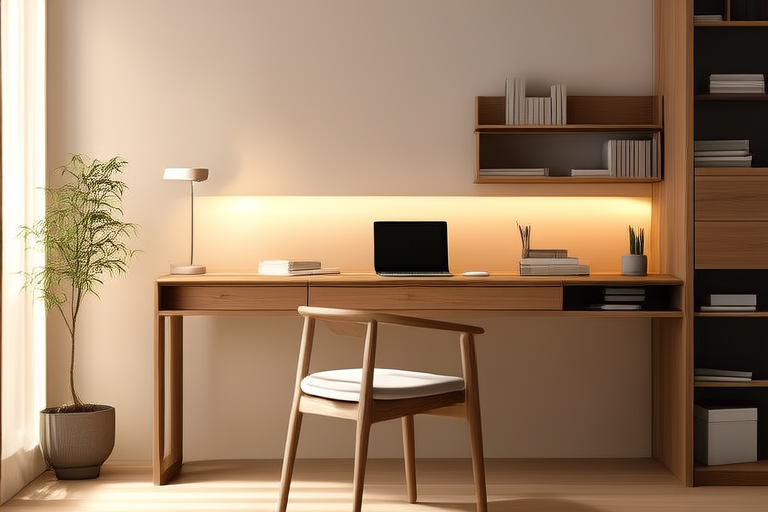The Ultimate Guide to Creating an Efficient Home Office Workspace Organization Layout
Introduction: Why Organizing Your Home Office Matters
In today’s fast-paced world, having a well-organized home office workspace is more important than ever. A cluttered or poorly designed workspace can lead to decreased productivity, increased stress, and even physical discomfort. On the other hand, an efficient and organized workspace can enhance your focus, creativity, and overall well-being. Whether you’re working from home full-time or just looking for a dedicated space to get things done, setting up a functional and ergonomic home office is essential. This guide will walk you through the steps to create an optimized workspace that maximizes productivity and minimizes distractions.
Understanding Ergonomics: The Key to Comfort and Efficiency
What Is Ergonomics?
Ergonomics refers to the science of designing and arranging workspaces to fit the people who use them. In the context of a home office, this means ensuring that your desk, chair, and equipment are positioned in a way that promotes comfort and reduces the risk of injury. Poor ergonomics can lead to issues like back pain, neck strain, and eye fatigue, which can significantly impact your ability to work effectively.
Tips for Ergonomic Setup
- Adjust Your Chair: Ensure your chair supports your lower back and allows your feet to rest flat on the floor. The seat height should be adjusted so that your knees are at a 90-degree angle when seated.
- Position Your Monitor: Place your computer monitor at eye level, about an arm’s length away. This helps prevent neck strain and reduces the risk of eye strain.
- Keyboard and Mouse Placement: Position your keyboard and mouse so that your arms are relaxed and your wrists are straight. Consider using a wrist rest if necessary.
- Lighting: Proper lighting is crucial. Avoid glare on your screen by positioning your monitor perpendicular to windows or using blinds to control natural light. Supplement with soft, indirect lighting to reduce eye strain.
Maximizing Space and Storage Solutions
Clever Use of Vertical Space
One of the best ways to maximize space in a small home office is to use vertical storage solutions. Shelving units, wall-mounted organizers, and floating shelves can help keep your workspace tidy without taking up valuable floor space.
Multi-functional Furniture
Investing in multi-functional furniture can also save space and add versatility to your home office. For example, a desk with built-in drawers or a sofa bed can serve multiple purposes, making it easier to transition between work and relaxation modes.
Smart Storage Solutions
Consider using modular storage systems that allow you to customize your setup as needed. Drawer organizers, file folders, and label makers can help you keep track of important documents and supplies. Label everything clearly to avoid confusion and save time searching for items.
Streamlining Technology and Reducing Clutter
Cable Management
Cables and wires can quickly become a tangled mess, leading to frustration and potential damage to your devices. Use cable ties, clips, and under-desk cable management trays to keep everything neat and organized. Label each cable to make troubleshooting easier.
Decluttering Your Desk
A clean desk leads to a clear mind. Regularly declutter your workspace by removing unnecessary items and organizing what remains. Keep only the essentials within arm’s reach, and store less frequently used items in drawers or on higher shelves.
Digital Organization
Just as important as physical organization is digital organization. Use cloud-based storage solutions like Google Drive or Dropbox to keep important files accessible from anywhere. Implement a system for naming and categorizing files to avoid confusion later on.
Case Study: Creating an Efficient Home Office Workspace
Step-by-Step Process
Let’s take a look at how Sarah, a freelance graphic designer, transformed her home office into an efficient and organized workspace.
- Initial Assessment: Sarah first assessed her current setup, identifying areas where she could improve. She realized that her chair was causing her back pain and her desk was too small for all her equipment.
- Investment in Ergonomic Equipment: Sarah purchased a new ergonomic chair and adjustable standing desk. She also invested in a monitor arm to position her screen at the optimal height.
- Vertical Storage Solutions: To maximize space, Sarah installed floating shelves above her desk for books and decorative items. She also added a wall-mounted organizer for office supplies.
- Decluttering and Organizing: Sarah went through her desk and removed anything that wasn’t essential. She used drawer organizers and labels to keep her supplies neatly arranged.
- Digital Organization: Sarah implemented a system for naming and categorizing her digital files, making it easier to find what she needed quickly.
Results
After implementing these changes, Sarah reported feeling more comfortable and productive. Her back pain subsided, and she found it easier to focus on her work without distractions. Her clients also noticed an improvement in her design quality, likely due to the reduced stress and increased efficiency.
Conclusion: Take Action Today
Creating an efficient home office workspace requires thoughtful planning and attention to detail. By focusing on ergonomics, maximizing space, and streamlining technology, you can transform your home office into a productive and enjoyable environment. Start by assessing your current setup and identifying areas for improvement. Invest in ergonomic equipment, use vertical storage solutions, and regularly declutter your workspace. With these tips in mind, you’ll be well on your way to creating an optimized home office that enhances your productivity and well-being.
Actionable Steps:
- Assess Your Current Setup: Identify areas that need improvement.
- Invest in Ergonomic Equipment: Prioritize comfort and health.
- Maximize Space: Utilize vertical storage solutions and multi-functional furniture.
- Declutter Regularly: Keep your workspace tidy and organized.
- Streamline Technology: Manage cables and organize digital files.
By following these steps, you can create a home office workspace that not only looks great but also functions efficiently. Happy organizing!
